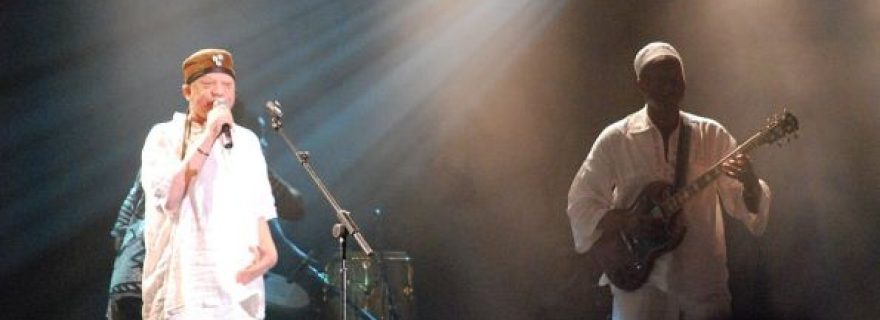Anthropology Rocks – On the Fair Use of YouTube (and Jimi Hendrix)
YouTube’s copyright policy refers to “fair use” of the material available at their website. But are we, academics, allowed to use material retrieved from YouTube for the documentation and teaching of Africa’s intangible heritage?
YouTube is the largest archive of African heritage…
From a purely legal point of view, using documents retrieved from YouTube may be “fair use”, but morally things are more complicated and more complex. And since anthropologists have a holistic approach, a closer look at the complexities is necessary, in particular for those who work on oral history and oral literature.
The Australian musicologist Graeme Counsel worked for several years in the archives of Radio Télévision Guinée, the national broadcaster of Guinea (West Africa). He compiled a huge/monumental collection of audio recordings from the era of Sékou Touré (1958-1984), a period characterized by a political ideology known as authenticité. This recorded material is almost forgotten by Guinea’s present-day population. It was rarely broadcast, because the era of Sékou Touré’s Socialist Revolution was not one that governments wished to hark back to, and the audio collection was poorly archived and was at risk from the harsh climate and termites.
Graeme had collected some related video material which he made available via a YouTube channel called Radio Africa, and he informed me a few months ago that among this material was a performance of the legendary female bard Siramori Diabaté, with whom I worked, as an MA student, a few months before she unexpectedly died in 1989. Given the scant material available on this legendary artist from Mali, I proposed to Graeme that, together with our Malian colleague Brahima Camara, we publish an annotated translation of the lyrics of the songs from that performance.
… but are we allowed to use it?
Although YouTube may not object to this scholarly enterprise, there might be more people involved. The government is not the problem; the government is entitled to the recording, but not to the song. And in practice, the artist’s family is no problem either: for two decades they have appreciated my efforts to document their oral heritage. However, we may wonder whether we have to ask the family’s permission to publish their (grand)mother’s words; this is not a matter of copyright, since the song is a traditional and has no author. Moreover, the people I have been working with, in particular Siramori’s family, strongly believe that communal knowledge can’t and shouldn’t be claimed by an individual.
So are there really no practical or moral reasons to prevent us from publishing the lyrics of this song? Aren’t there other stakeholders? Yes, there are! If I had been working with oral heritage of Native Americans, for instance, and if a colleague had found a source as unique as Siramori’s television performance, I bet it would have never come to my mind to publish the lyrics of this song. The reason for this is that these groups have institutionalized their oral heritage, and protect any infringement of it by legal means. If I published archival material “for the sake of Academic Research” without the permission of various representative boards and associations, I would be sued - I am sure!
The publication of Siramori’s lyrics won’t be withheld or impeded by whatever cultural board or ethnic association in Guinea or Mali. These don’t exist. The reason for their non-existence is not because people in this area are nicer and more collaborative than groups that protect their intangible heritage legally and institutionally. Thinking along such lines would be fooling ourselves.
The reason for their non-existence is the fact that these people are too poor to institutionalize the protection of their intangible heritage. Therefore, publishing Siramori’s song, even though it is legally “fair use” and written by authors who sincerely admire and respect “the culture”, is at the same time a clear and harsh representation of the unjust and unequal world we live in. An anthropological analysis shocks you into awareness of this, and at least we should feel ourselves indebted for the rest of our lives.
Jimi and Chuck may disagree
Graeme, Brahima and me are now working on a publication in which we present not only Siramori’s song, but also analyze the more general issue of making an (audio-visual) archive available via YouTube. This is because the issue with Siramori’s performance is relevant for all recordings archived by Graeme Counsel, EXCEPT ONE! When the project was finished, the Guinean Ministry of Culture organized a celebration at which Les Amazones de Guinée performed. This all-female (!), revolutionary (founded in 1961!) band of gendarmes dressed in military uniform was also represented in the archive just finished. So Graeme filmed the gig, and added it to the archive. However, it is clear that the band’s performance is rather different from what it was in the era of authenticité.
Les Amazones de Guinée - Live at La Paillote
When you see this ethnographic recording, you will be convinced that anthropology not only shocks, but rocks. And you may start to think that Jimi Hendrix or Chuck Berry could also have legally protected their moves….
And, by the way, if you want my paper “Fair-y Tales” on the early 1970s Soundiata album recording by Rail Band featuring Salif Keita (also available on YouTube), you can contact me at jansenj@fsw.leidenuniv.nl



0 Comments
Add a comment